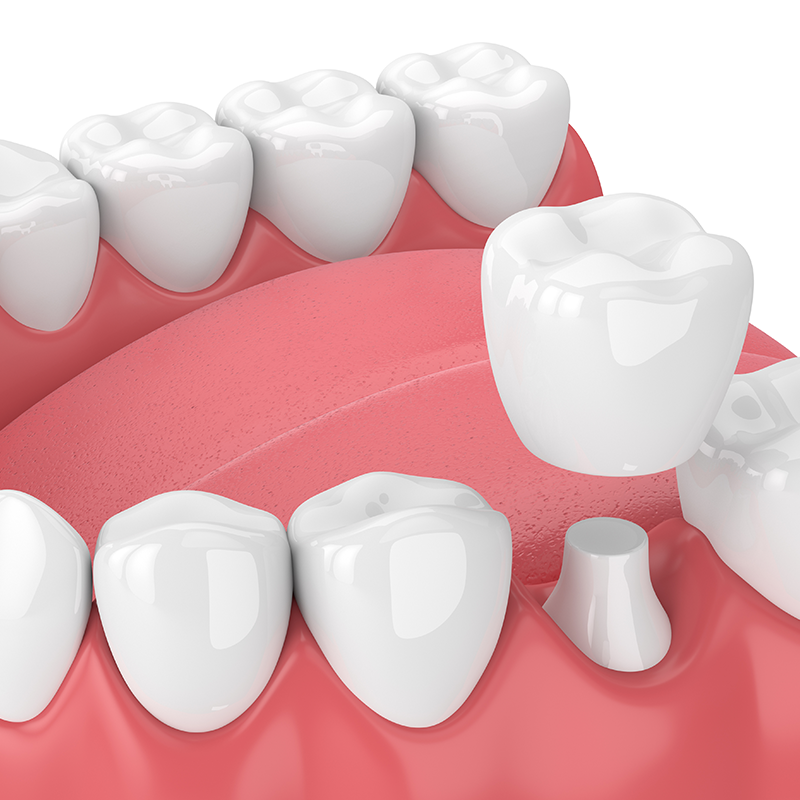Porcelain Crowns
What are dental crowns ?
Dental crowns are restorations that protect damaged, cracked or broken down teeth. A crown strengthens your existing, damaged tooth so as to preserve its functionality. Dental crowns are also commonly known as caps (because a crown sits over your existing tooth, covering the entire outer surface). The animations below graphically illustrate the procedure of placing dental crowns:
Why might I need crowns ?
- If your tooth has undergone significant decay and there is not enough tooth structure remaining to support a filling or an inlay and maintain functionaility.
- If a large portion of your tooth has fractured and it cannot be built up using traditional composite bonding techniques .
- If you have a large cavity and opt for the additional protection a crown offers to your tooth over a large composite filling or an inlay.
- If you have had a dental implant to replace a missing tooth, a crown will be fitted to the abutment of the titanium implant.
- Following root canal treatment, a crown is often needed to strengthen the tooth.
- If you grind your teeth and have a poor diet, acid errosion may reduce your teeth to a point where the only option available is to crown them.
- For cosmetic reasons, to improve the aesthetics of your smile, you may opt for all porcelain cosmetic crowns

Are dental crowns always the best option?
Crowns should not be the first choice just to improve the aesthetics of your teeth, because a dentist needs to grind a significant portion of the original tooth away. Less invasive alternatives include veneers or dental bonding. Crowns are required when the strength of the tooth supporting the restoration is compromised, since veneers and dental bonding restorations are only as strong as the supporting tooth.
What materials can crowns be made from?
e max Press:
- Highly esthetic lithium discalate glass ceramic
- Consistently high strength of 400MPa
- Anterior and posterior applications
- Stunning natural beauty
- Comprehensive shade range
Cercon , Zirconia
- Flexible strength of 900MPa
- Completely biocompatible
- Computer milled for a remarkably precise fit
- Natural beauty
- Fracture resistance beyond all other ceramic materials
emax CAD:
- High strength monolithic, full contour crowns
- Empressed-like estheticsand translucency
- Precision milled CAD/CAM fit
- Lithium disclicate glass ceramic
- Fracture resistance beyond all other ceramic materials
Lava crowns:
- Resilient, durable and shock resorbent
- Empressed-like estheticsand translucency
- Digitally designed,and milled
- Wear value similar to natural teeth
- Achieves enamel-like luster
- Ideal for implants
What does the procedure of having dental crowns fitted involve?
On your second visit, your dentist will remove the temporary crown and roughen the outer surface of your prepared tooth with a special etching acid to give the dental cement a good surface to bond to. Your dentist will sit the crown over your tooth to see if it fits with your smile correctly and is the right colour and shape. Once you are both happy with the restoration and how it looks, your dentist will cement the crown firmly into place.
